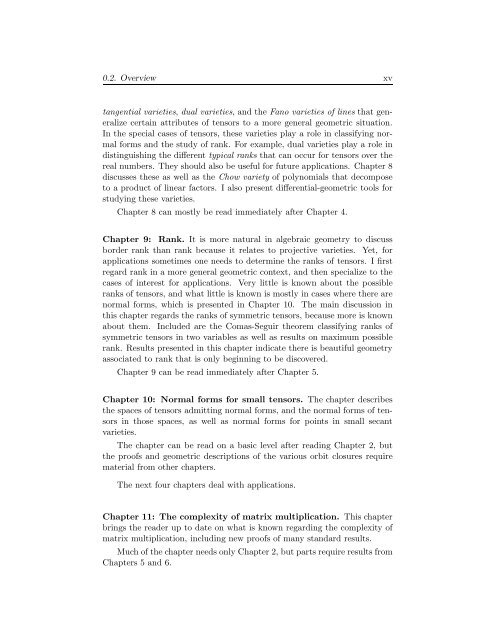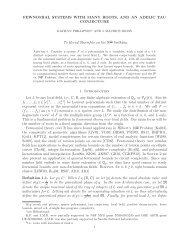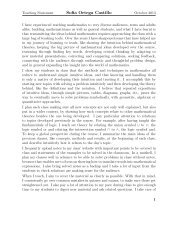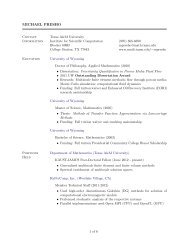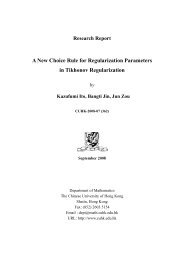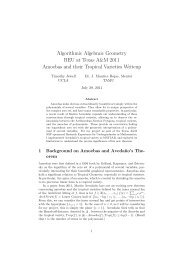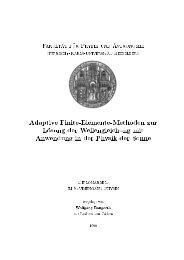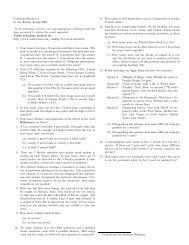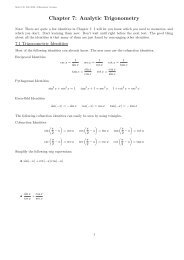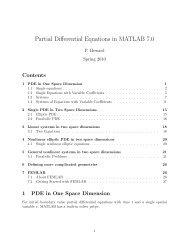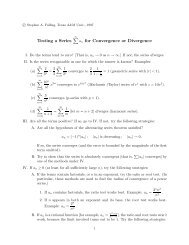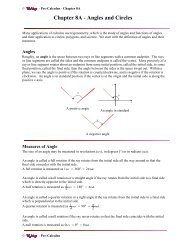Tensors: Geometry and Applications J.M. Landsberg - Texas A&M ...
Tensors: Geometry and Applications J.M. Landsberg - Texas A&M ...
Tensors: Geometry and Applications J.M. Landsberg - Texas A&M ...
You also want an ePaper? Increase the reach of your titles
YUMPU automatically turns print PDFs into web optimized ePapers that Google loves.
0.2. Overview xv<br />
tangential varieties, dual varieties, <strong>and</strong> the Fano varieties of lines that generalize<br />
certain attributes of tensors to a more general geometric situation.<br />
In the special cases of tensors, these varieties play a role in classifying normal<br />
forms <strong>and</strong> the study of rank. For example, dual varieties play a role in<br />
distinguishing the different typical ranks that can occur for tensors over the<br />
real numbers. They should also be useful for future applications. Chapter 8<br />
discusses these as well as the Chow variety of polynomials that decompose<br />
to a product of linear factors. I also present differential-geometric tools for<br />
studying these varieties.<br />
Chapter 8 can mostly be read immediately after Chapter 4.<br />
Chapter 9: Rank. It is more natural in algebraic geometry to discuss<br />
border rank than rank because it relates to projective varieties. Yet, for<br />
applications sometimes one needs to determine the ranks of tensors. I first<br />
regard rank in a more general geometric context, <strong>and</strong> then specialize to the<br />
cases of interest for applications. Very little is known about the possible<br />
ranks of tensors, <strong>and</strong> what little is known is mostly in cases where there are<br />
normal forms, which is presented in Chapter 10. The main discussion in<br />
this chapter regards the ranks of symmetric tensors, because more is known<br />
about them. Included are the Comas-Seguir theorem classifying ranks of<br />
symmetric tensors in two variables as well as results on maximum possible<br />
rank. Results presented in this chapter indicate there is beautiful geometry<br />
associated to rank that is only beginning to be discovered.<br />
Chapter 9 can be read immediately after Chapter 5.<br />
Chapter 10: Normal forms for small tensors. The chapter describes<br />
the spaces of tensors admitting normal forms, <strong>and</strong> the normal forms of tensors<br />
in those spaces, as well as normal forms for points in small secant<br />
varieties.<br />
The chapter can be read on a basic level after reading Chapter 2, but<br />
the proofs <strong>and</strong> geometric descriptions of the various orbit closures require<br />
material from other chapters.<br />
The next four chapters deal with applications.<br />
Chapter 11: The complexity of matrix multiplication. This chapter<br />
brings the reader up to date on what is known regarding the complexity of<br />
matrix multiplication, including new proofs of many st<strong>and</strong>ard results.<br />
Much of the chapter needs only Chapter 2, but parts require results from<br />
Chapters 5 <strong>and</strong> 6.



